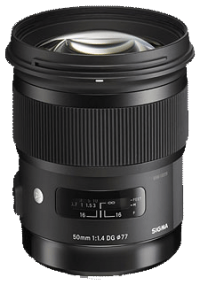Sigma announces price for 50mm f/1.4 Art lens. It’s official: Sigma owns the 50mm space.
posted Thursday, April 10, 2014 at 10:19 PM EDT

We've never seen an SLRgear lens review get the kind of response that our recent one for the Sigma 50mm f/1.4 Art lens did, not even Sigma's own wildly popular 18-35mm f/1.8 zoom. With the competition from camera makers and Zeiss ranging from $1,300 to $4,000, there's been a lot of speculation about what price Sigma would bring the 50/1.4 Art out at.
In our own writing, we were cautious not to set too low an expectation for the price, saying only that we were confident it'd be "less than $1,700" in the US. While Sigma hadn't given us any indication of what the price would be, we were pretty certain it'd be less than that amount, and would rather have people be pleasantly surprised than upset that it didn't cost $700. Now the truth is known, and it's a very pleasant truth indeed.
The Sigma 50/1.4 Art's estimated street price in the US will be (a little drumroll, please...) $949!
Given how much precision glass is inside, not to mention three Fluorite-analog* elements, we figure Sigma's banking on selling a lot of these to make them profitable. Given its exceptional optical quality and the low price relative to any of its competitors, though, we think they'll be very successful in this. (In fact, we just hope Sigma can make enough of them to meet the demand.)
You can place your pre-orders for the amazing Sigma 50mm f/1.4 Art using the links below: If our coverage of the Sigma 50/1.4 Art has helped you decide to purchase one, buying through a link below helps support future reviews going forward. Wherever you buy one from, though, you may want to get in line quickly; we think there's going to be quite a waiting list for this lens!
Pre-order:
* Fluorite-analog glass has extremely low dispersion, mimicking the low dispersion of Calcium Fluorite. The glass analog also has a higher index than Fluorite, so it doesn't require the very high curvature usually found in Fluorite elements, which in turn tended to increase spherical aberration. Calcium Fluorite is also quite fragile, and therefore much more prone to breakage than glass elements.